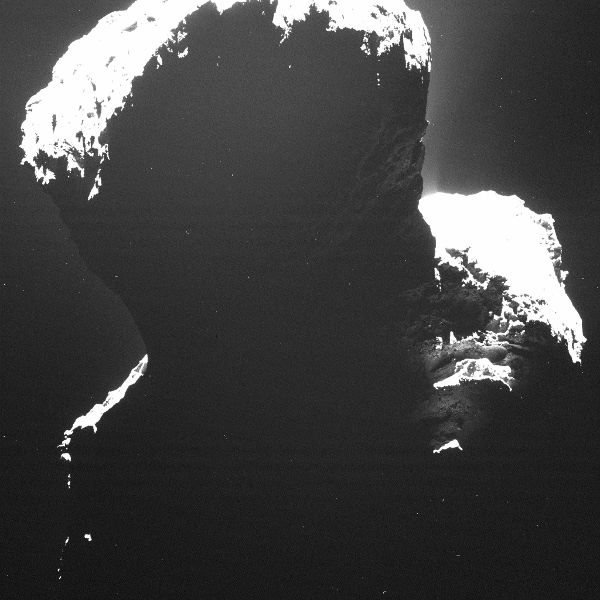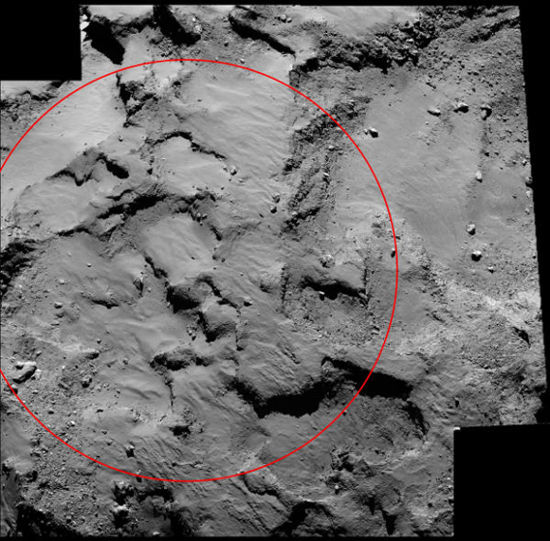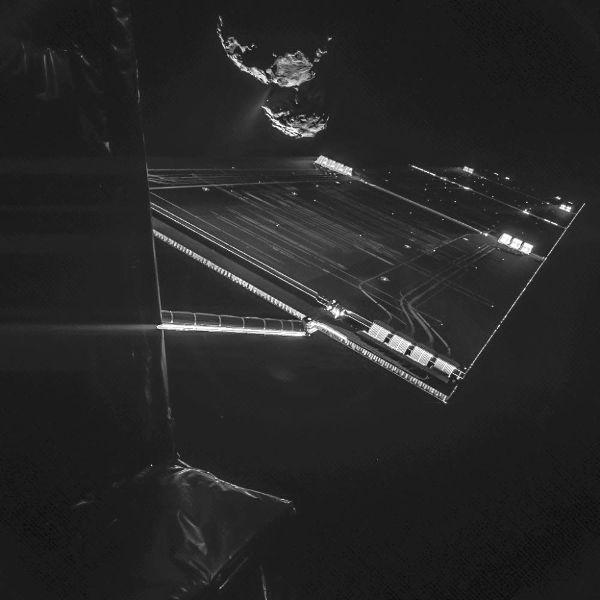European Space Agency’s Rosetta mission to comet 67P/Churyumov-Gerasimenko with the spacecraft and its Philae robotic lander has been a great success. It continues to provide us with new scientific data about the small comet and our solar system. Starting at about the 1:11 mark, this report by EuroNews delves into some more detail about the scientific discoveries that the Rosetta mission is enabling. As the Rosetta space probe circles the comet, it is looking for signs of its Philae lander and waiting for it to ‘wake up’ so that even more can be learned about 67P/Churyumov-Gerasimenko.
Tag Archives: rosetta
Getting up close and personal with a comet

Before its eventual landing on Comet 67P/Churyumov-Gerasimenko, this would have been the closet view that we had seen of a comet. ESA’s Philae lander took this picture of the comet while it was descending towards it, from a distance of just 130 feet (40 meters). This picture was taken using the Rosetta Lander Imaging System (ROLIS) which is mounted on the bottom of Philae. We can clearly see that this comet is covered by dust and debris ranging from fine-grain particles to rocks of varying size. The slight depressions and elevations across the surface of this comet are also discernible from this picture.
Dark side of Comet 67P/Churyumov-Gerasimenko

The “dark sides” of celestial bodies are pretty interesting to look at and this is not exception. The ESA’s Rosetta craft took this rare picture of the dark side of comet 67P/Churyumov-Gerasimenk which it has been circling for the upcoming rendezvous with its Philae lander. Rosetta’s scientific imaging system (OSIRIS) snapped this picture in September, at a distance of just 19 kilometers from the comet and gives us some indications of surface structures.
Philae’s landing site

November 12, 2014 is just five days away and this is when the historic mission to deploy the European Space Agency’s Philae lander on comet 67P/Churyumov-Gerasimenko will occur. The Rosetta spacecraft has been orbiting and scouting this comet for many months. Rosetta used its on-board OSIRIS narrow-angle camera to take this picture of the comet’s surface from a distance of just 30 kilometers. The circled area is designated “Site J” – the primary landing site for Philae on this distant comet.
Rosetta takes a selfie

Everyone is doing it so why not Rosetta? Thanks to its onboard Comet Infrared and Visible Analyser (CIVA), this selfie picture was taken by the Philae lander and shows Rosetta spacecraft’s 52 foot long solar arrays, with comet 67P/Churyumov-Gerasimenko just 16 kilometers away in the background. This picture is actually a combination of two selfies, of shorter and longer exposures, which when combined are able to show us both the lighter and darker portions of the scene outside Rosetta. This is the last image from Philae before the lander separates from Rosetta on November 12th and makes its rendezvous with the comet that it is circling.